Greek sculptures, starting in the mid-600’s BC, were mainly done in the white marble so available in Greece. The sculptors studied the human anatomy and became experts in turning out what we now know as Classical Sculptures.
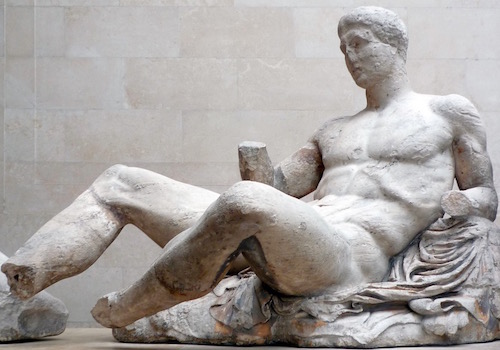
In 146 BC Rome defeated Greece at the Battle of Corinth and started to become what would be the Roman Empire. But in reality Greece and all she stood for had conquered Rome. Horace (65–8 BC) was a Roman lyric poet. He was aware of his age and of the debt Romans owed to Greece. Horace had been educated in Athens and sent his son to Athens to learn the mind and art of the Greeks. Horace realized that Rome had physically conquered Greece, but in reality Greece had conquered Rome. In one of his letters he comments: “When Greece was taken, she took control of her rough invader and brought the arts to rustic Latium.” The Epistles 2.1.ll.156-57 Horace suggests a metaphor with Greece as the conquered, cultivated woman who took control of the crude Roman man. Horace was correct. Most of Roman civilization was founded on Greek principles, including their religion and their art.
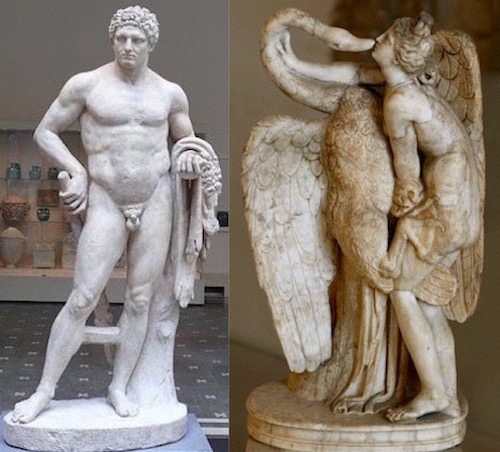
Early Christian sculptors followed the Greco-Roman example of their time in their works just as the Romans imitated the Greek sculptors. Rather than imitate Greek myths, the Christians sculptors took as their inspiration the Bible.
“I am the good shepherd. The good shepherd lays down his life for the sheep.” John 10:11
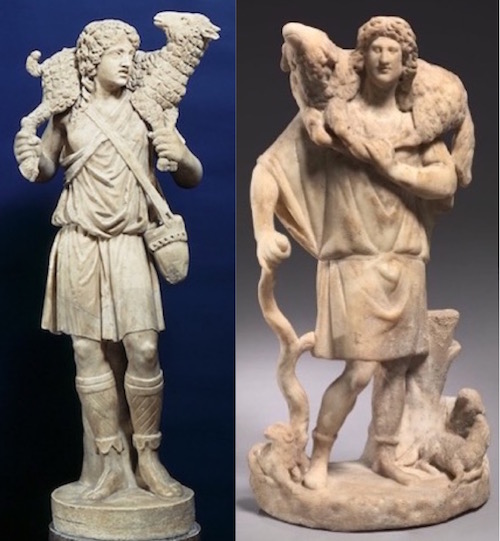
A Christian casket in the British Museum (below) is an example of how the Roman Christian sculptors followed the Greco-Roman manner but applied the beauty to Christian texts:
“When Pilate saw that he was getting nowhere, but that instead an uproar was starting, he took water and washed his hands in front of the crowd. ‘I am innocent of this man’s blood,’ he said. ‘It is your responsibility!’” Matthew 27:24
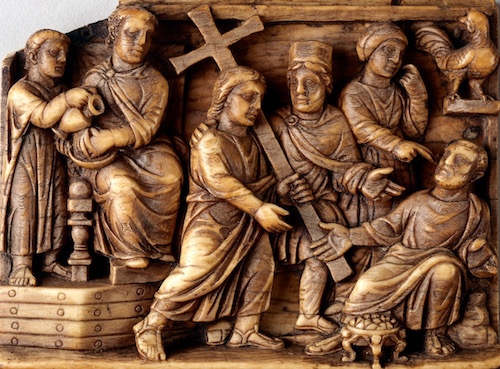
”Then Pilate handed Jesus over to be crucified, and the soldiers took Him away. Carrying His own cross, He went out to The Place of the Skull, which in Aramaic is called Golgotha. There they crucified Him, and with Him two others, one on each side, with Jesus in the middle.”John 19:16-18
“Then they seized him (Jesus) and led him away, bringing him into the high priest’s house, and Peter was following at a distance. And when they had kindled a fire in the middle of the courtyard and sat down together, Peter sat down among them. Then a servant girl, seeing him as he sat in the light and looking closely at him, said, ‘This man also was with him.’ But he denied it, saying, ‘Woman, I do not know him.’ And a little later someone else saw him and said, ‘You also are one of them.’ But Peter said, ‘Man, I am not.’ And after an interval of about an hour still another insisted, saying, ‘Certainly this man also was with him, for he too is a Galilean.’ But Peter said, ‘Man, I do not know what you are talking about.’ And immediately, while he was still speaking, the rooster crowed. And the Lord turned and looked at Peter. And Peter remembered the saying of the Lord, how he had said to him, ‘Before the rooster crows today, you will deny me three times.’ And he went out and wept bitterly.” Luke 22:54-62

The Sarcophagus of Junius Bassus (above and below) is very famous in art circles and has been described as “probably the single most famous piece of early Christian relief sculpture.” Junius Bassus died in 359. He had been praefectus urbi, responsible for the administration of the city of Rome, and had served as an official under Constantine the Great’s son, Constantius II. He was from a senatorial family and came from the elite of Rome. He died at the age of 42 and an inscription on the sarcophagus (now in the Vatican) indicates he converted shortly before his death.
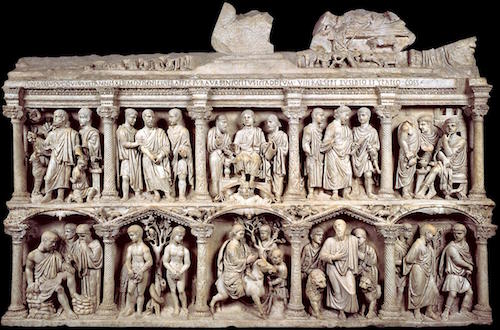
Some of the members of his family were obviously Christian because they commissioned a great unknown sculptor to carve Junius’ elaborate and throughly beautiful sarcophagus filled with Old and New Testament stories. That sculptor ignored rules followed in official reliefs by mixing frontal and side sculptures of people plus the scenes are three-dimensional with depth and background. The heads/features of all the Testaments’ people are each one different. This ancient sarcophagus is in the manner of the Greco-Roman art of its time with an individual twist by the sculptor. The themes are Biblical rather than mythic.
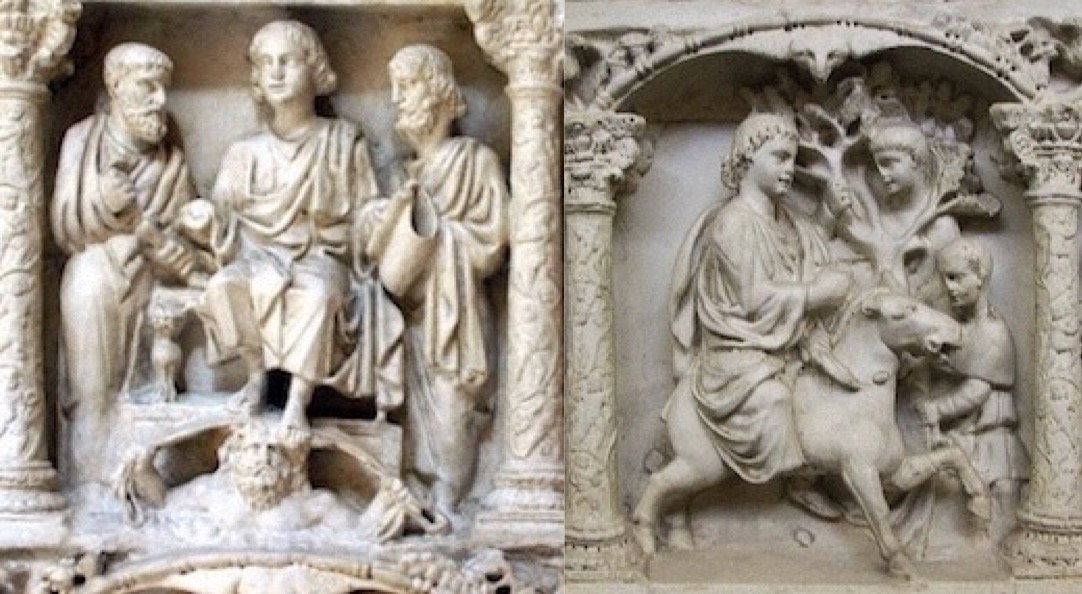
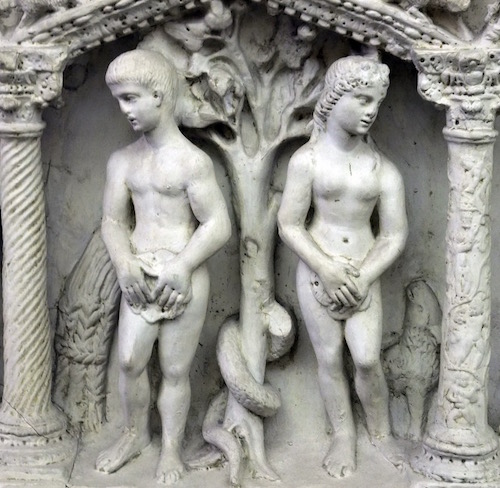
The sarcophagus of Junius Bassus is the most beautiful and expertly carved of any Christian sculpture we have of Early Christian art.— Sandra Sweeny Silver
Four minute video on the Sarcophagus
